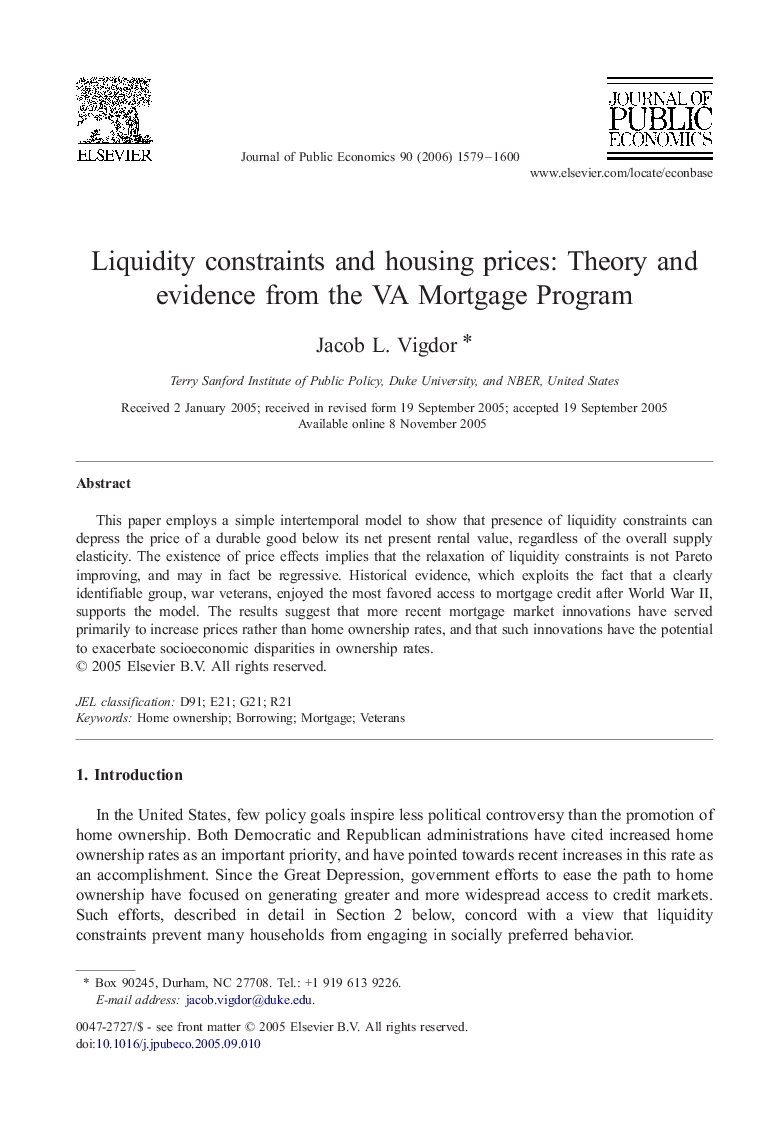| Article ID | Journal | Published Year | Pages | File Type |
|---|---|---|---|---|
| 970390 | Journal of Public Economics | 2006 | 22 Pages |
This paper employs a simple intertemporal model to show that presence of liquidity constraints can depress the price of a durable good below its net present rental value, regardless of the overall supply elasticity. The existence of price effects implies that the relaxation of liquidity constraints is not Pareto improving, and may in fact be regressive. Historical evidence, which exploits the fact that a clearly identifiable group, war veterans, enjoyed the most favored access to mortgage credit after World War II, supports the model. The results suggest that more recent mortgage market innovations have served primarily to increase prices rather than home ownership rates, and that such innovations have the potential to exacerbate socioeconomic disparities in ownership rates.
